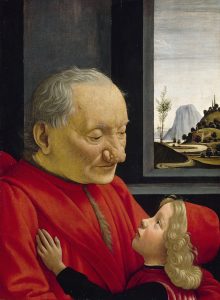This is the second post this week inspired by the week of action on the climate emergency.

Cat Tully writes: Last week, I and a group of other global Fellows at Salzburg Global Seminar published a Recommendation setting out a new project idea. We proposed that people from across the globe should sit down and write letters to their grandchildren’s grandchildren, living in 2200. The idea was the result of a futures lab convened by SOIF for Salzburg Global Seminar, bringing together inspiring young policymakers from across the globe, from Denmark to Japan.
The letters will – we hope – be collated and published. But the writing process is more important. It will encourage the letters’ authors to think – and as a result, act – for the long-term. The aim is to encourage the authors, whether leading decision-makers or just citizens, to think through more clearly their hopes and fears for future generations. And, in turn, to examine more closely how their own actions, at the policy or personal level, will shape the world in which their descendants live.
View from posterity
When facing the crises and questions of our age, writing letters down through the generations helps us think in an immediate and personal sense about how we’ll be seen by posterity, and can sharpen our moral judgement.
With Greta Thunberg’s speech at the UN this week, it’s clear that urgent questions of intergenerational fairness are rising up the agenda. But the global climate emergency movement is just the most visible, and long overdue, example of the current pushback by younger generations, and those who represent the unborn, to ensure their voice is heard. SOIF has been proud to work with the Gulbenkian Foundation on their toolkit for policymakers to assess the intergenerational impacts of new policies.
Thinking of future generations in concrete and specific terms helps us to make more responsible, future-minded decisions today, both on a personal and political level. Writing to them makes that relationship suddenly immediate.
A longer version of this post can be found on Medium.
The image at the top of the post is An Old Man and his Grandson, by Domenico Ghirlandaio. Public domain.
